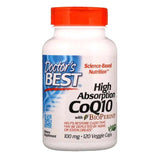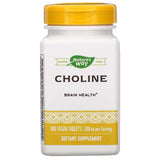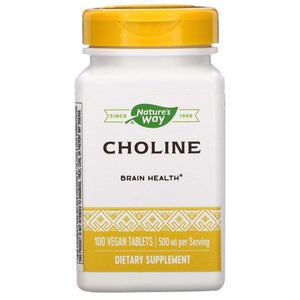Lactose Free Milk: Is it Better Than Regular Milk?


Related products

Lactose-free milk is a dairy product from which lactose, the sugar present in milk, has been removed. This process involves the addition of the enzyme lactase, which breaks down lactose into glucose and galactose, simpler sugars that are more easily digestible by individuals with lactose intolerance. The production of lactose-free milk caters to the dietary needs of those who experience discomfort from consuming regular milk, providing them with an alternative that retains the nutritional benefits of dairy without causing adverse digestive symptoms.
The demand for lactose-free milk has seen a significant rise in recent years, driven by increased awareness of lactose intolerance and a broader consumer shift towards specialised dietary products. According to market research, the lactose-free dairy sector is experiencing robust growth, reflecting a growing preference among consumers for products that cater to specific health concerns and dietary restrictions.
The purpose of this article is to conduct a comprehensive comparison between lactose-free milk and regular milk, examining their respective health benefits, taste profiles, and environmental impacts. This analysis aims to provide readers with informed insights into the advantages and considerations associated with each option, facilitating a better understanding of their dietary choices.
Understanding Lactose Intolerance and Lactose-Free Milk
Lactose intolerance is a condition characterised by the body's inability to digest lactose due to a deficiency in lactase, the enzyme responsible for breaking down lactose in the digestive system. Symptoms of lactose intolerance include bloating, diarrhoea, and abdominal cramps following the consumption of lactose-containing foods. The prevalence of lactose intolerance varies significantly across populations, with higher rates observed in Asian, African, and South American countries. It is estimated that approximately 65% of the global population experiences some degree of lactose intolerance after infancy.
Production of Lactose-Free Milk
The production of lactose-free milk involves the addition of lactase to regular milk, catalysing the breakdown of lactose into its constituent sugars, glucose, and galactose. This enzymatic process not only renders the milk digestible for individuals with lactose intolerance but also slightly increases its sweetness due to the presence of simpler sugars.
Varieties of Lactose-Free Milk
The market offers a diverse range of lactose-free milk products, including both dairy-based and plant-based alternatives. Dairy-based lactose-free milks are made from cow's milk with the lactose removed, while plant-based alternatives, such as almond, soy, and oat milks, are inherently lactose-free. These options provide consumers with a variety of choices to suit their dietary preferences and nutritional needs.
Nutritional Comparison
Nutritional Content: Lactose-Free Milk vs. Regular Milk
Lactose-free milk and regular milk are nutritionally comparable, as the process of removing lactose does not significantly alter the content of proteins, fats, vitamins, and minerals. Both types of milk provide essential nutrients, including calcium, vitamin D, and potassium. However, the enzymatic process used to produce lactose-free milk can result in a slightly higher calorie content due to the presence of simpler sugars.
Added Ingredients in Lactose-Free Milk
Some lactose-free milk products contain added ingredients, such as synthetic lactase or additional sugars, to enhance taste and texture. It is important for consumers to read product labels carefully to understand the nutritional profile of the lactose-free milk they are choosing.
Impact of Processing on Nutrient Levels
The processing involved in producing lactose-free milk has minimal impact on the nutrient levels of the milk. Studies indicate that the nutritional quality of milk is largely preserved through the lactase treatment process. However, it is worth noting that some lactose-free milks are fortified with additional vitamins and minerals to align with nutritional guidelines and consumer health objectives.
In conclusion, lactose-free milk provides a viable alternative for individuals with lactose intolerance, offering similar nutritional benefits to regular milk without the discomfort associated with lactose digestion. The choice between lactose-free and regular milk should be guided by individual dietary needs, preferences, and any specific health considerations.
Health Benefits and Concerns
Benefits for Individuals with Lactose Intolerance
Lactose-free milk offers significant benefits for individuals with lactose intolerance, enabling them to enjoy the nutritional advantages of milk without experiencing the adverse digestive symptoms associated with lactose consumption. By consuming lactose-free milk, individuals can maintain their intake of essential nutrients such as calcium, vitamin D, and protein, which are crucial for bone health, muscle function, and overall well-being.
Digestive Health
Comparatively, lactose-free milk promotes better digestive health for those intolerant to lactose, as it eliminates the primary cause of discomfort. Regular milk, while nutritious, can lead to symptoms such as bloating, gas, and diarrhoea in lactose-intolerant individuals. The removal of lactose ensures that lactose-free milk is digestible and comfortable for everyone to consume.
Potential Health Concerns
However, some lactose-free milk products may contain added sugars or flavourings to enhance taste, which could contribute to an increased intake of unnecessary calories and additives. Consumers are advised to select products carefully, considering their nutritional content and ingredient list. Furthermore, lactose-free milk does not address allergies or sensitivities to milk proteins such as casein, which are present in both lactose-free and regular milk.
Allergies and Sensitivities
For those with allergies or sensitivities to milk proteins like casein, alternatives beyond lactose-free dairy milk, such as plant-based milks, might be more suitable. These options provide a dairy-free alternative, catering to a broader range of dietary restrictions and preferences.
Taste and Culinary Use
Taste Comparison
The process of removing lactose slightly alters the taste and texture of lactose-free milk, making it slightly sweeter than regular milk due to the presence of glucose and galactose. Some individuals may prefer this sweeter taste, while others may find it less appealing compared to the more neutral flavour of regular milk.
Culinary Uses
Lactose-free milk can be used interchangeably with regular milk in most recipes, including baking, cooking, and beverage preparation. The minor difference in sweetness may slightly affect the taste profile of certain dishes, but this is often negligible in the overall flavour of cooked or baked goods.
Shelf Life and Storage
Lactose-free milk often has a longer shelf life than regular milk due to the process it undergoes during production, which can result in a product that is less prone to bacterial growth. However, once opened, both types of milk should be stored in the refrigerator and consumed within a similar timeframe.
Environmental and Economic Considerations
Environmental Impact
The production of lactose-free milk involves additional processing steps compared to regular milk, potentially leading to a higher environmental footprint due to increased energy use. However, the impact varies depending on the specific production practices and technologies used. Comparatively, plant-based lactose-free alternatives may have a lower environmental impact, particularly in terms of water usage, land use, and greenhouse gas emissions.
Economic Aspects
Lactose-free milk is generally more expensive than regular milk due to the added processing required to remove lactose. This cost difference can affect both consumers and producers, with the latter facing higher production costs. Despite these costs, the growing demand for lactose-free products may incentivise further innovation and efficiency improvements in the sector.
Sustainable Agriculture
Lactose-free milk can play a role in sustainable agriculture by providing options that cater to diverse dietary needs and preferences, potentially reducing food waste and improving overall dietary inclusivity.
Consumer Preferences and Market Trends
The dairy and non-dairy milk market has witnessed evolving consumer preferences, with a noticeable shift towards lactose-free and plant-based alternatives. This trend reflects a growing awareness of dietary restrictions, health considerations, and environmental concerns among consumers. The future of the lactose-free milk market appears promising, with ongoing innovation aimed at improving taste, nutritional value, and environmental sustainability.
People Also Ask
Is lactose-free milk healthier than normal milk?
Lactose-free milk is not inherently healthier than normal milk; its healthiness depends on individual dietary needs and preferences. For people with lactose intolerance, lactose-free milk is a better option as it allows them to enjoy the benefits of milk without experiencing digestive discomfort. Both lactose-free and regular milk provide similar nutritional profiles, including essential nutrients like calcium, vitamin D, and protein.
What is the healthiest milk to drink?
The healthiest milk to drink varies based on individual health goals, dietary restrictions, and nutritional needs. For individuals seeking to reduce calorie intake, skim or low-fat milk might be preferable. Those with lactose intolerance may find lactose-free dairy milk or plant-based alternatives like almond, soy, or oat milk to be suitable options. The choice should align with one's dietary requirements, such as calorie control, lactose intolerance, or the need for certain nutrients (e.g., calcium, vitamin D).
What are 2 advantages of lactose-free milk?
Digestive Comfort: Lactose-free milk allows individuals with lactose intolerance to consume dairy without experiencing the uncomfortable symptoms associated with lactose digestion, such as bloating, gas, and diarrhoea.
Nutritional Benefits: Lactose-free milk provides the same essential nutrients found in regular milk, such as calcium, vitamin D, and protein, making it a nutritious option for those who cannot tolerate lactose.
Is it better to eat lactose-free?
For individuals with lactose intolerance or sensitivity, consuming lactose-free products is certainly better as it avoids digestive discomfort and allows for the inclusion of dairy in the diet without adverse effects. For those without lactose intolerance, there's no inherent health benefit to choosing lactose-free products over regular dairy products. The decision should be based on personal health needs, dietary preferences, and any specific medical advice received.
Conclusion
Lactose-free milk offers a valuable alternative for individuals with lactose intolerance, providing the benefits of dairy without the discomfort. While it presents certain health, taste, and culinary advantages, consumers should also consider potential health concerns, environmental impacts, and economic factors when choosing between lactose-free and regular milk. As consumer preferences continue to evolve, the dairy industry is likely to see further advancements in lactose-free milk products, contributing to a more inclusive and sustainable dietary landscape. Personalised advice for choosing between lactose-free and regular milk should be based on individual health needs, taste preferences, and environmental values, ensuring that consumers can make informed decisions that align with their dietary goals and ethical considerations.





































 Rated Excellent by 26,523+ Reviews
Rated Excellent by 26,523+ Reviews